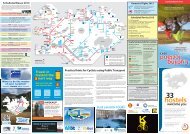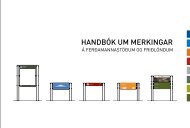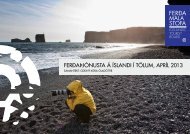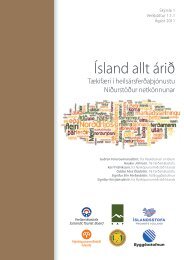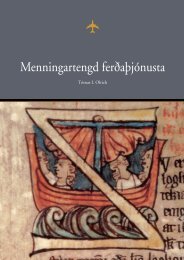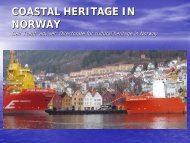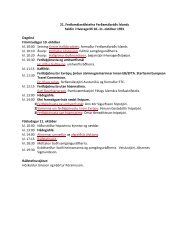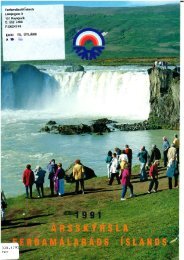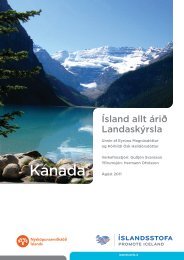Untitled
Untitled
Untitled
You also want an ePaper? Increase the reach of your titles
YUMPU automatically turns print PDFs into web optimized ePapers that Google loves.
Firstly, what one consumes as a tourist is in a sense images. What<br />
one may experience at a tourist destination, an attraction, or throughout the<br />
whole adventure of travelling is very much ephemeral and temporal. This<br />
means that tourist experiences are not equal to tangible commodities that<br />
can be bought, taken home and consumed after purchase. Although tourist<br />
experiences may be transformed into travel memories and be sustained by<br />
such things as photos and souvenirs, a fundamental part of tourism<br />
consumption is also about being there and experiencing a place with one’s<br />
own body.<br />
Secondly, tourist products and services involve and depend on<br />
intangible qualities, such as a friendly atmosphere or beautiful<br />
environment. Yet, these qualities are as concrete and place-bound as a<br />
tourist destination, or an attraction, itself. Thus any destination or<br />
attraction needs to come into being in more de-materialised ways in order<br />
to distribute a sample of itself to the tourism market.<br />
It is here that images, or more generally representations, come to<br />
the rescue. Unlike tourist destinations, as geographically fixed material<br />
resources and facilities located somewhere, images are able to become<br />
circulating tourism references that can re-present potential place-bound<br />
tourist products and possible experiences in other places. To a certain<br />
extent images can re-present places for tourism, and their immovable<br />
amenities and tourist commodities such as a landscape-scenery or a<br />
particular food and service at the local restaurant, and travel to tourist<br />
generating regions.<br />
In tourism research and tourism theory images have thus most often<br />
been addressed and understood as representations of tourist destinations,<br />
attractions and experiences. Consequently, representations in the form of<br />
images of places and spaces for tourism produced for tourists, as well as<br />
by tourists themselves, have been investigated in tourism studies for a long<br />
time. This interest in the relationship between tourism and images comes<br />
in particular from the supposed capacity of images to attract tourists and<br />
potentially guide and shape their consuming behaviours (Chon 1990, Pike<br />
2002).<br />
Image 1.1: The Visuality of tourist information. 4<br />
4 www.visitcheshire.com (retrieved 2009-04-09).<br />
3



